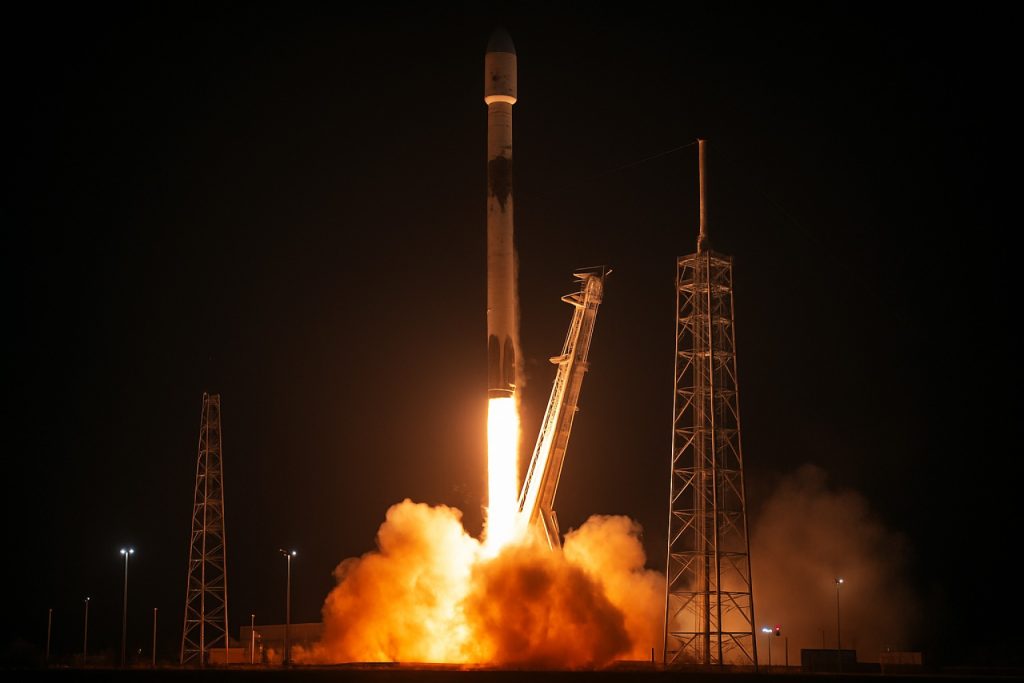
Inside SpaceX’s Jaw-Dropping Midnight Launch: SXM-10 Satellite Soars to Orbit for SiriusXM’s Next Era
SpaceX’s Falcon 9 delivers SXM-10 for SiriusXM in a flawless midnight launch, marking a record in booster landings and new satellite power for 2025.
- Launch Time: June 7, 2025, 12:54 a.m. EDT (0454 UTC)
- Booster Landings: 458 total; 112 aboard ‘A Shortfall of Gravitas’
- SXM-10 Specs: Over 27 ft tall, 100 ft long, ~6,400 kg
- 2025 Satellite Investments: SiriusXM to spend $220 million
As the clock ticked past midnight on June 7, 2025, SpaceX’s Falcon 9 rocket ripped through the Florida night sky, carrying the powerful SXM-10 satellite for SiriusXM. This latest liftoff from Cape Canaveral Space Force Station wasn’t just routine—it was a masterclass in precision and ambition, as viewers worldwide watched history in the making via the launch live stream.
The Falcon 9 booster—seasoned after seven previous missions—blazed into the upper atmosphere before expertly returning to earth, landing with robotic accuracy on the droneship ‘A Shortfall of Gravitas.’ SpaceX once again shattered expectations, notching its 458th successful booster landing, 112 of those on this very droneship alone.
What Makes SXM-10 a Game Changer?
The SXM-10 satellite, built by Maxar Technologies, represents the cutting edge of broadcast satellite technology. Standing taller than a two-story house and stretching the length of a basketball court when fully deployed, SXM-10 is designed to supercharge SiriusXM’s content delivery across North America.
This third-generation satellite is based on the Maxar 1300-class platform, a robust satellite bus that supports over 90 satellites orbiting Earth today. Its S-band antenna, manufactured by L3Harris Technologies, ensures top-tier audio quality and signal reach for millions of subscribers.
SiriusXM’s satellite upgrades, including the recently launched SXM-9, underscore the broadcaster’s long-term commitment to nationwide coverage and crystal-clear sound, even as listeners tune in from remote highways or bustling city streets.
How Does SpaceX’s Falcon 9 Keep Raising the Bar?
SpaceX has become virtually synonymous with rocket reusability. This Falcon 9, tail number B1085, had already powered missions for NASA, Firefly Aerospace, and the US Space Force. The booster’s return after launching SXM-10 highlights SpaceX’s knack for landing and relaunching rockets faster than any other aerospace company, helping to lower costs and enable ever-more-frequent journeys to space.
Want to learn more about SpaceX’s reusable tech? Visit SpaceX for mission archives and future launch schedules.
Q&A: What’s Next for SiriusXM Satellites?
Q: How many new satellites will SiriusXM put in orbit?
A: SXM-10 is part of a next-gen fleet that includes SXM-11 and SXM-12, with launches planned through 2028 as SiriusXM phases in new technology.
Q: How much is SiriusXM investing in satellite technology?
A: The company expects to spend $220 million in 2025 alone, but future annual costs will decrease sharply as the latest satellites complete deployment.
Q: Who are the key partners building these powerhouses?
A: Maxar Technologies builds the main platform, with special components like the S-band antenna crafted by innovators such as L3Harris Technologies.
Check out Maxar Technologies and SiriusXM for more on satellite advancements and radio services.
How-To: Track Future Space Launches Like a Pro
1. Follow official social media for real-time updates—from SpaceX to NASA.
2. Bookmark live-stream hubs like YouTube for launch videos.
3. Set alerts for launch windows using dedicated apps or NASA’s launch calendar.
4. Join online forums to discuss the latest launches and trends in space technology.
Don’t Miss the Next Big SpaceX Moment!
- Bookmark reliable launch trackers and official sites.
- Follow industry leaders for behind-the-scenes access.
- Stay informed on new satellite deployments and Falcon 9 records.
- Sign up for alerts—don’t let another rocket launch pass you by!
Stay tuned as SpaceX and SiriusXM shape the future of satellite broadcasting—your next road trip playlist may soon be powered by this very rocket launch.



